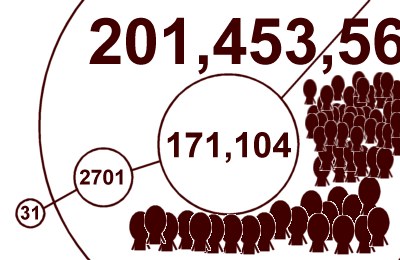
Getting the balance right between work and life is difficult, if not impossible, for many people. There are so many pressures on us pushing and pulling from countless directions. Multitasking has become the norm, but the act of juggling career, family, and social life and keeping all aspects circling through the air, never dropping anything, remains an unattainable goal. Perhaps it always was.
Maybe the few who succeed are happy 24/7, get plenty of sleep, have quality time with family and friends, and enjoy and are satisfied fully by their work and then there are the rest of us back here on planet earth with bills to pay, mouths to feed, and things to see and do.
Caroline Gatrell of the Management Learning and Leadership department and Cary Cooper in the Management School at Lancaster University, UK, point out in a recent research paper how work-life balance policies are important in controlling employee stress levels. They discuss the details of a study on work-life balance in the current issue of European Journal of International Management (2008, 2(1), 71-86).
They have investigated just how gender and body affect the way companies handle these policies. Their research shows that, despite advances in equality rules and regulations, there is a serious gap between the social expectations of professionally employed mothers and fathers. Men, they say are generally discouraged from working flexibly, while mothers who work long hours are repeatedly criticised.
Gatrell and Cooper argue that the pressure to organise work-life balance, according to embodied and gendered social norms, is a cause of stress to both fathers and mothers, this is no truer than among those employed at a managerial level. They concede that there is no standard family, never was, so that the problems of work-life balance may differ, depending on the social situation of the group under consideration.
They point out that the stresses and pressures may be very different for lone parents, same-sex relationships, and for workers with no children. Regardless, the lives of married and co-habiting men and women with children remain the focus of social policies on work-life balance, at least in those countries within the OECD (Organization for Economic Cooperation and Development), which includes the Australia, Canada, France, Germany, Japan, New Zealand, UK, US, etc.
They ask, “Why does work-life balance matter to policy makers, and why might it matter to employers?” and explain how the concept of ‘work-life balance’ was originally developed as a result of government policies ‘aimed specifically at addressing the pressures attendant in combining work with family life’, particularly where both parents are in work. These work-life balance policies are usually associated with giving employees opportunities to work flexibly and were initially aimed at working mothers.
Flexibility might be interpreted in different ways by different people, bosses, or employees. “These could include the rearrangement of working times to suit individual needs, job-shares, or the undertaking at home of tasks which would previously have been associated with day-time, bodily presence, in the office,” the researchers explain.
However, “In practice, most employers interpret ‘flexibility’ in terms of giving some employees the opportunity to reduce working hours by working part time or fractionally.” This has ultimately led to a very narrow range of opportunities. “Perhaps employers’ narrow interpretation of flexibility is due, in part, to the possibility that the whole idea of work-life balance poses a problem for employers,” the researchers suggest. It is most likely that in a market-driven economy, employers will want to maximize profits and reduce costs. Inevitably, this would mean re-shaping ‘worker friendly’ polices to their advantage, which could quite possibly be at the expense of those staff for whom the policies were originally intended to help.
“The experiences of employed fathers and mothers is at odds with research which shows that men and women in professional and managerial roles seek to spend more time with families, especially when children are young, and find it stressful if this is hard to achieve. The link between long-hours-cultures, stress and unhealthy behaviour such as poor diet and increased alcohol consumption has been proven conclusively,” argue Gatrell and Cooper. Like I say, who do you work for?
 Gatrell, C., & Cooper, C. (2008). Work-life balance: working for whom? European J. of International Management, 2 (1) DOI: 10.1504/EJIM.2008.016929
Gatrell, C., & Cooper, C. (2008). Work-life balance: working for whom? European J. of International Management, 2 (1) DOI: 10.1504/EJIM.2008.016929




